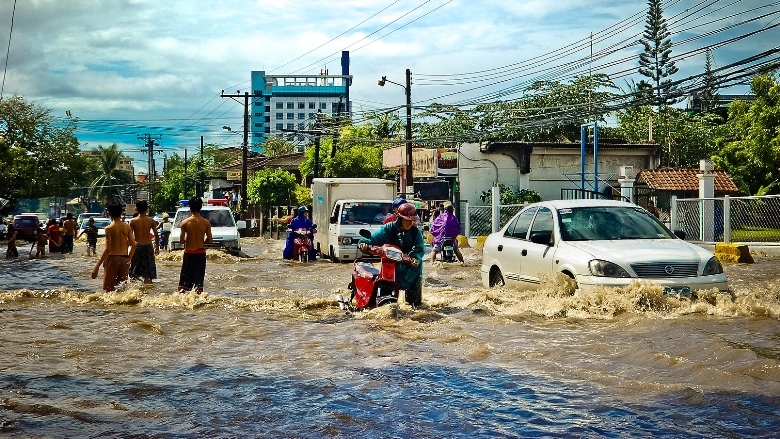News & Updates
Disaster resilience and post disaster recovery in Asia
12 March 2018

The latest report by United Nations Economic and Social Commission for Asia and the Pacific (ESCAP) found that natural disasters are becoming more frequent and intense in Asia, with disaster risk outpacing resilience.
ESCAP also estimates that between 2015 and 2030 40% of global economic losses from disasters will be in Asia and the Pacific. The greatest of these effects will be felt in Small Island Developing Nations with annual losses close to 4% of their GDP, compared to 2.5% in the Least Developed Countries.
For example, 2017 saw a number of storms that caused a high level of damage, including Typhoon Hato that claimed 900 lives and affected a further 41 million.
Since 1970 over 2 million people, an average of 43,000 a year, have been killed by natural disasters in the Asia-Pacific region. This is 57% of the global death tolls for natural disasters.
The greatest impacts of disasters are felt in the countries with the least capacity to prepare and respond to the events. Between 2000 and 2015, the low and lower middle-income countries in Asia (such as Bangladesh, Vietnam and Myanmar) experienced almost 15 times more disaster deaths than the region’s high-income countries (such as Hong Kong and Japan).
The ASEAN member states are particularly vulnerable as they are exposed to volcanic eruptions, earthquakes, floods, cyclones and droughts. Since 2000 over 100 million people in the region have been effected by disasters.
Dr. Shamshad Akhtar, United Nations Under-Secretary-General and Executive Secretary of ESCAP highlighted the importance of disaster preparedness and early warning systems:
“Disasters can very quickly strip poor people of their livelihoods bringing deeply disruptive impacts that push them back into absolute poverty or trap them in an intergenerational transmission of poverty. Developing cost-effective financing is needed to decrease the existing resilience gaps”
Despite this, Asia is the world’s fastest growing region with a GDP of US$ 2.57 trillion in the ASEAN region alone.
It is therefore critical that discussions of disaster risk management, resilience and response strategies are at the forefront of Asia’s development.
Between 1987 and 2013 the Asian Development Bank approved $6.4 billion for the purposes of disaster relief, early recovery and reconstruction activities.
To assist Asia with recent post disaster responses the Ministry of Commerce of the People’s Republic of China has partnered with the United Nations Development Programme to provide US $12 million to Bangladesh, Nepal and Pakistan.
In addition, the UNDP reports that the total amount of aid being spent in South East Asia has increased 23% since 2015, with $11.1 billion spent in 2017.
Disaster risk reduction strategies should take into account the changing risks of climate change especially in areas where the threat coincides with a higher concentration of poor, vulnerable or marginalised people.
If you’d like to stay informed on the latest updates in aid and development, please sign up for the AIDF newsletter.
Image credit: World Bank